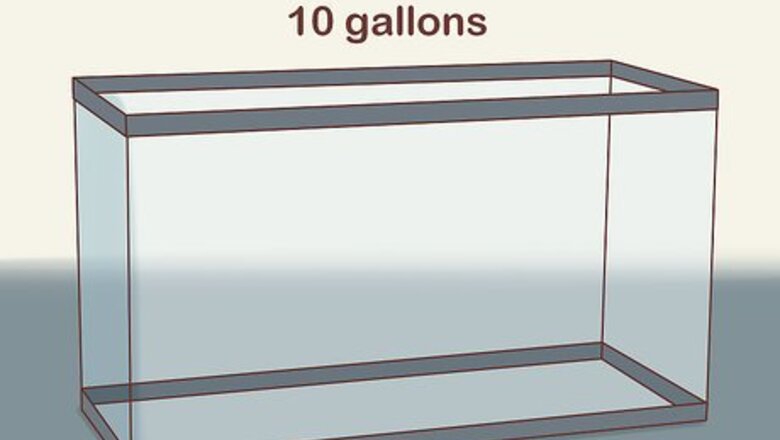
views
Considering Compatible Traits
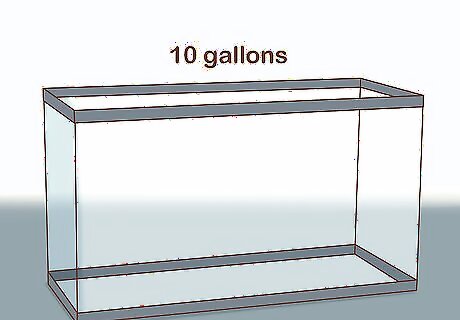
Research the space requirements of each tank mate to avoid overcrowding. Regardless of the type of fish or tank mate you introduce to the tank, you’ll need to make sure that every fish has enough room. Guppies should be kept in a tank that is at least 10 gallons (38 L) in size, with roughly 2 gallons (7.6 L) for each guppy. Make sure that your tank is big enough to accommodate all of your fish. Check the space requirements for the species of tank mate you are considering. They won’t be able to share the space in the tank, so make sure that there is plenty of room. You should also ensure that the fish you choose won't spend all of their time in the same areas. Keep a variety of bottom-dwelling, middle-dwelling, and top-dwelling fish to avoid overcrowding your aquarium. Keep some decorations and plants in the tank so that your fish can hide away and have some time alone if they want to. This will help them feel more comfortable in a busier tank.
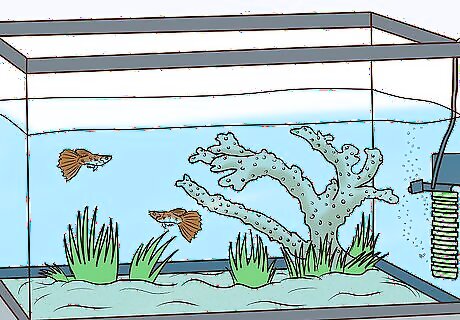
Choose animals that thrive in 75 to 85 °F (24 to 29 °C) water. Guppies need water that is between 75 to 85 °F (24 to 29 °C) in order to live comfortably. Keep this temperature range in mind when choosing a new tank mate to make sure it requires a similar level of warmth Most other species of tropical fish will thrive in warm water. Fish such as goldfish prefer colder temperatures, so they would need to be kept in a different tank.

Select a creature that lives in freshwater. As freshwater fish, you guppies need to be kept in water that is largely free from salt. Make sure that the tank mates you are considering for your guppies will be able to live comfortably in freshwater as well. Damselfish, mollies, and clownfish are examples of saltwater fish that will not be able to survive in a freshwater tank.
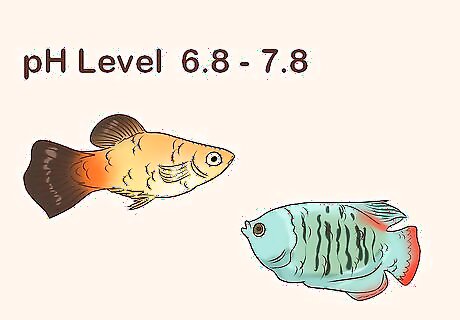
Pick an animal comfortable with a pH level of 6.8 to 7.8. The safe pH level for a freshwater fish can vary between 5.5 and 7.5, with guppies on the higher end between 6.8 and 7.8. Make sure that the fish you choose can thrive in a similar environment to prevent them from getting sick. Most saltwater fish will require a pH level above 8, which is another reason they cannot comfortably share a tank with guppies.
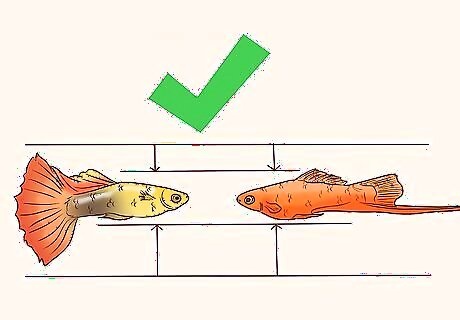
Choose smaller tank mates over bigger ones. While there are plenty of fish that can live comfortably with your guppies, many species may try to eat the guppies if they share a tank. Aim for fish that are the same size or smaller than your guppies to reduce the chances of your guppies being threatened. Even if they don’t try and eat your guppies, some fish may “nip” at the guppies long, flowing fins. Look online or talk to someone at your local pet store if you’re unsure whether or not your guppies may be threatened by their new tank mates.
Selecting Specific Species
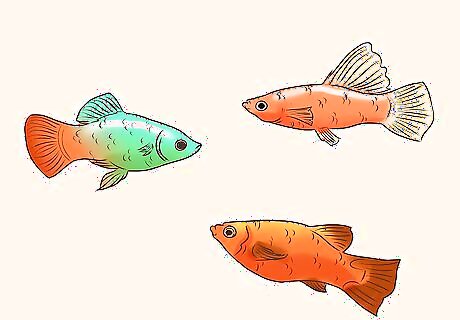
Pick another live-breeding fish, such as platyfish or swordtails. Guppies are live-breeders, meaning that they give birth to live young rather than hatching from eggs. Other live-breeding fish have many similar requirements to guppies, so will thrive often thrive in the tank. Try adding some colorful platyfish or shiny swordtails. Keep in mind that, while a lot of live-breeding fish will thrive together, that doesn’t mean that all live-breeding fish will make good tank mates. Make sure that the new fish can live comfortably in the guppies environment before adding them.
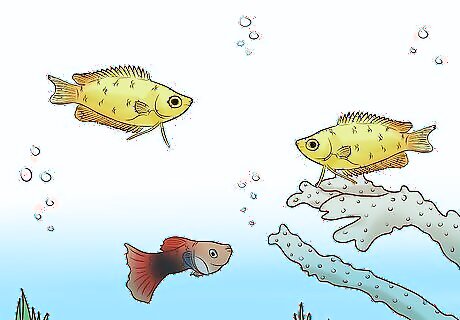
Opt for some peaceful fish, such as honey gouramis. Even though they are quite a bit larger than guppies, honey gouramis are very peaceful, shy, and bashful fish that will leave your guppies alone. Try adding 1 or 2 honey gouramis, or a similarly peaceful and compatible fish, to the tank. Honey gouramis are very peaceful, but also require a higher level of maintenance than guppies. Make sure you’re ready to put in the extra work to take care of them before adding them to your tank. Cory catfish are a similarly relaxed fish that will happily share a tank with your guppies. Make sure you have a sand substrate in the tank for cory catfish, as gravel will be too harsh for them.
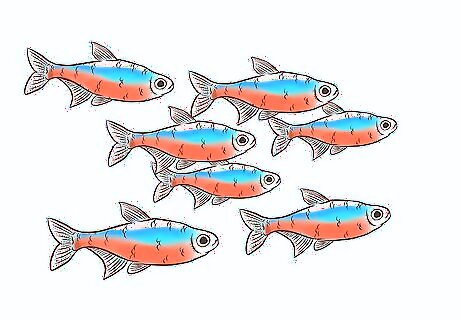
Try adding a small school of neon or cardinal tetras. Neon and cardinal tetras are small yet brightly colorful fish that have the same tank requirements as guppies. Add a small school of 5 or 6 tetras to the tank for an extra burst of color and some faster-moving fish to complement your guppies. If you’re breeding the guppies in the same tank as the tetras, make sure there are plenty of hiding spaces for the guppy fry. The tetras may try to eat the young guppies otherwise.
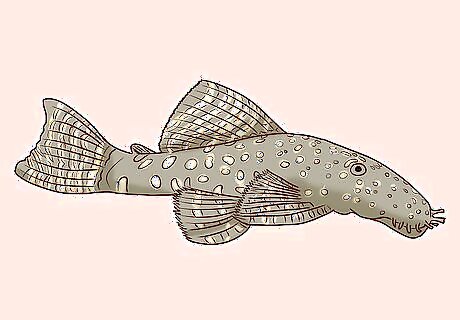
Add some bottom-dwellers to balance your tank. As guppies tend to hang around the middle and top of the tank, some bottom-dwelling fish will happily cohabitate with your guppies. Try adding some bristlenose plecos or some loaches that will spend time on the bottom of your tank. Some bottom-feeders will help maintain the water quality of your tank by eating overgrown algae and uneaten food that’s missed by your guppies.
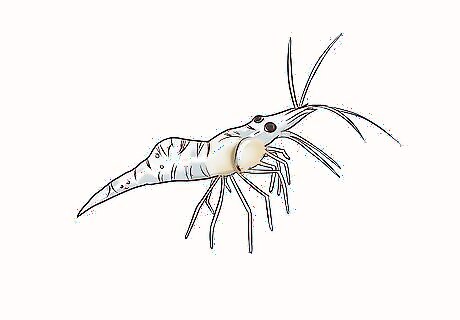
Choose some ghost shrimp for something a little different. You don’t need to limit the possible tank mates for your guppies to only fish. Some invertebrates, such as ghost shrimp or crystal red shrimp, will make for an interesting addition to your tank of guppies. Add a few to your guppy tank for a unique tank mate that is easy to care for. Be careful when adding shrimp to your guppies tank, as some guppies may think they’re a snack rather than a new tank mate. Add 1 or 2 at first to see how they fare before adding any more.
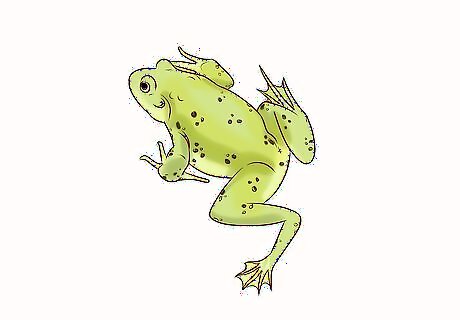
Go with an African dwarf frog for an amphibian addition. Although they are frogs rather than fish, the African dwarf frog spends most of its time completely underwater. As such, they'll feel right at home sharing a tank with your guppies. Add 2 or 3 African dwarf frogs to the tank to diversify your tank's inhabitants. African dwarf frogs are very social animals, so you should keep at least 2 in the tank to keep them happy.
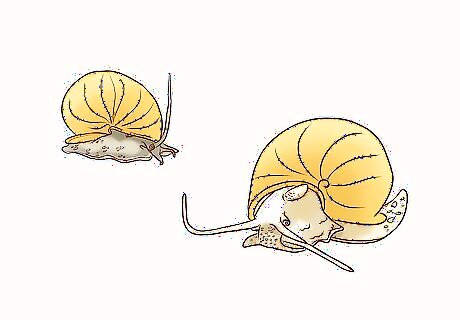
Try adding some apple snails for a low-maintenance pet. Apple snails are incredibly easy to care for and get on with most species. They'll also help clean up algae inside your tank, making them a great addition. Try adding a few apple snails to your tank to keep the bottom and sides of the aquarium interesting. Make sure you keep a lid on your tank if you add apple snails, as they'll be able to climb the side and may even manage to get out in enough time.
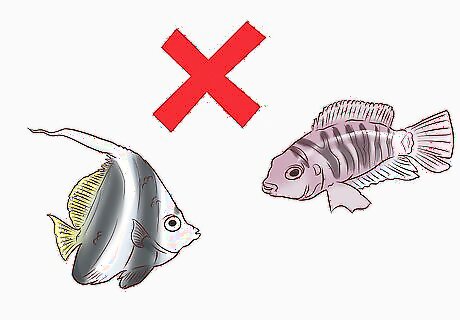
Avoid larger fish, such as angelfish or cichlids. There's a good chance that any fish too much larger than your guppies may see them as a meal rather than a tank mate. Never put fish too much larger than your guppies into the same tank, or else there's a chance some of your guppies will go missing. Some smaller angelfish might make for OK tank mates, but cichlids and barbs will be too aggressive and may cause your guppies stress.
Adding Your Chosen Tank Mates
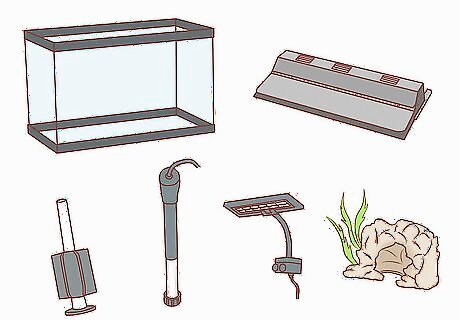
Make a quarantine tank for your new tank mates. Set up a 5 to 10 US gal (19 to 38 L) tank with a heater, cover, light, and water safe for your creatures to live in. Add a sponge filter from a different tank to your quarantine tank, which will transfer over some good bacteria and help your new creatures thrive. A quarantine tank is necessary to make sure the new creatures aren't sick when they are added to the tank with your guppies. If you keep a lot of fish or have multiple aquariums, it may pay to have a quarantine tank set up all the time. Your quarantine tank doesn't need to have as many decorations or plants as a regular tank, as the creatures won't spend a lot of time in it and therefore won't have enough time to adjust to it.
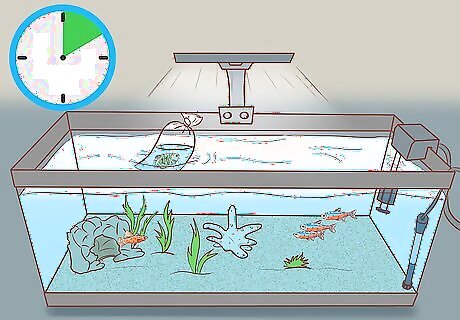
Acclimate your new tank mates to the quarantine tank. Float the bag that your new creatures came in on the top of the quarantine tank for 10 minutes. Once the water temperatures have equalized, top up the bag with water from the tank so the bag is twice as full. After another 10 minutes, scoop the creatures from the bag and place them into the tank. Dropping creatures or fish into a new tank too quickly can shock them and lead to death or illness. Always acclimate your creatures properly when adding them to a tank.
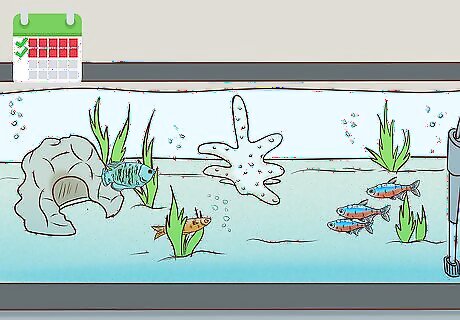
Quarantine your tank mates for 2 to 3 weeks. Leave the new tank mates in the quarantine tank for at least 2 weeks, checking them daily for signs of illness. Look out for any irregular bumps, swelling, discoloration, unusual behavior, bleeding, or death. Any of these could indicate an illness that could infect your guppies when you add your tankmates. Research the signs of illness for the tank mates that you have chosen, as the possible illnesses and symptoms can vary wildly between species. If you notice any signs of illness, treat it properly and continue quarantining the tank mates for another 2 weeks after they stop showing signs of illness. At this point, they can be added to the guppy tank.
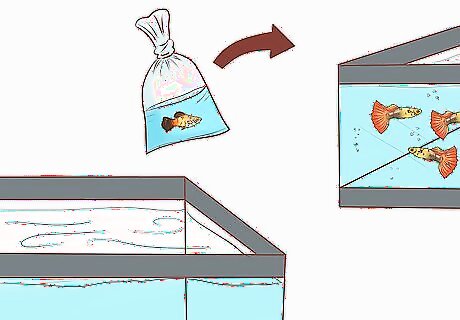
Add your new tank mates to the guppies' tank. Move your chosen tank mates from the quarantine tank into a plastic bag half-full of tank water. Place the bag into the water of your guppies' tank and let it sit. After 10 minutes, fill the bag with water from your guppies' tank to let the tank mates adjust to the water. Once they're acclimated, scoop them out of the bag and into the tank. Make sure you give the tank mates plenty of time to adjust to the water in their new tank. Otherwise, the sudden change to new water may shock them, making them ill.
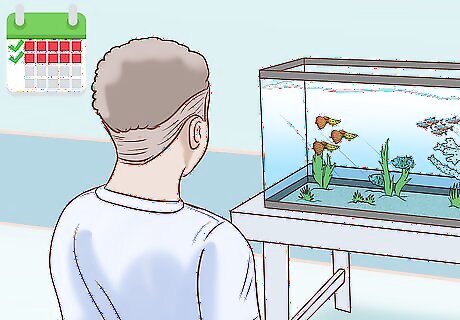
Watch your tank for 2 to 3 weeks to make sure the tank mates adjust. Check your tank once or twice a day for 2 or 3 weeks after you add the new tank mates. Look out for a change in behavior from your guppies, as well as any bleeding or fighting that could indicate the guppies aren't getting along with the tank mates you've added. If you don't think your guppies are happily cohabitating with their new tank mates, you may need to move the tank mates to a different tank. It may take a while for the new tank mates to adjust to the guppies, before which they may hide in the bottom of the tank. If they are still hiding after 2 or 3 days, it may be a sign that they are afraid of the guppies and need to be moved to a new tank.













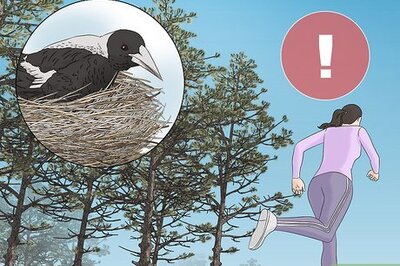





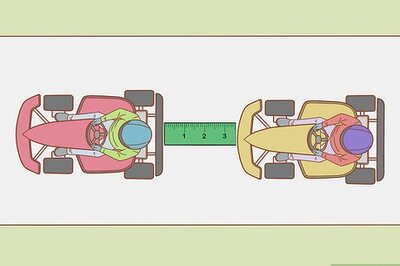
Comments
0 comment